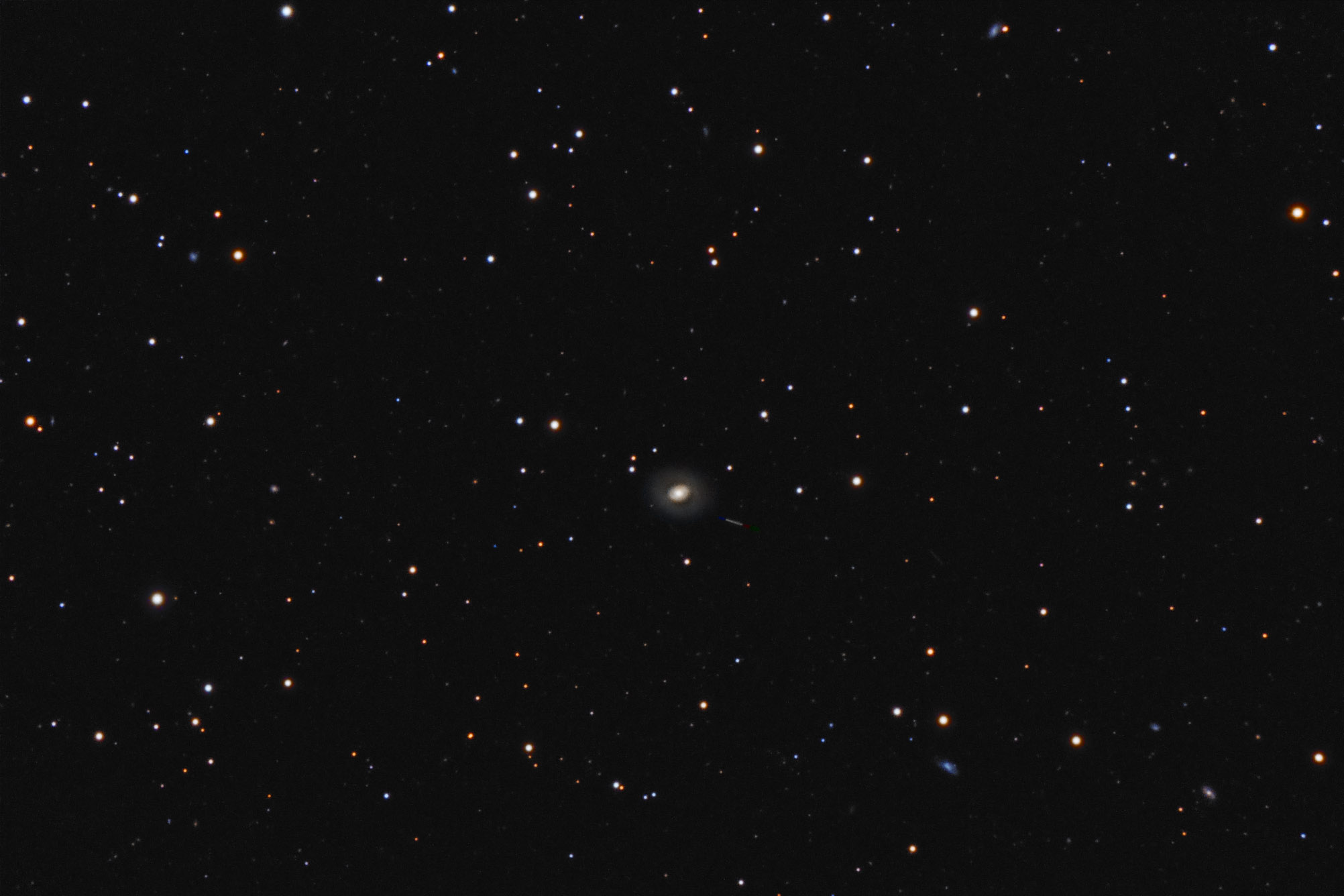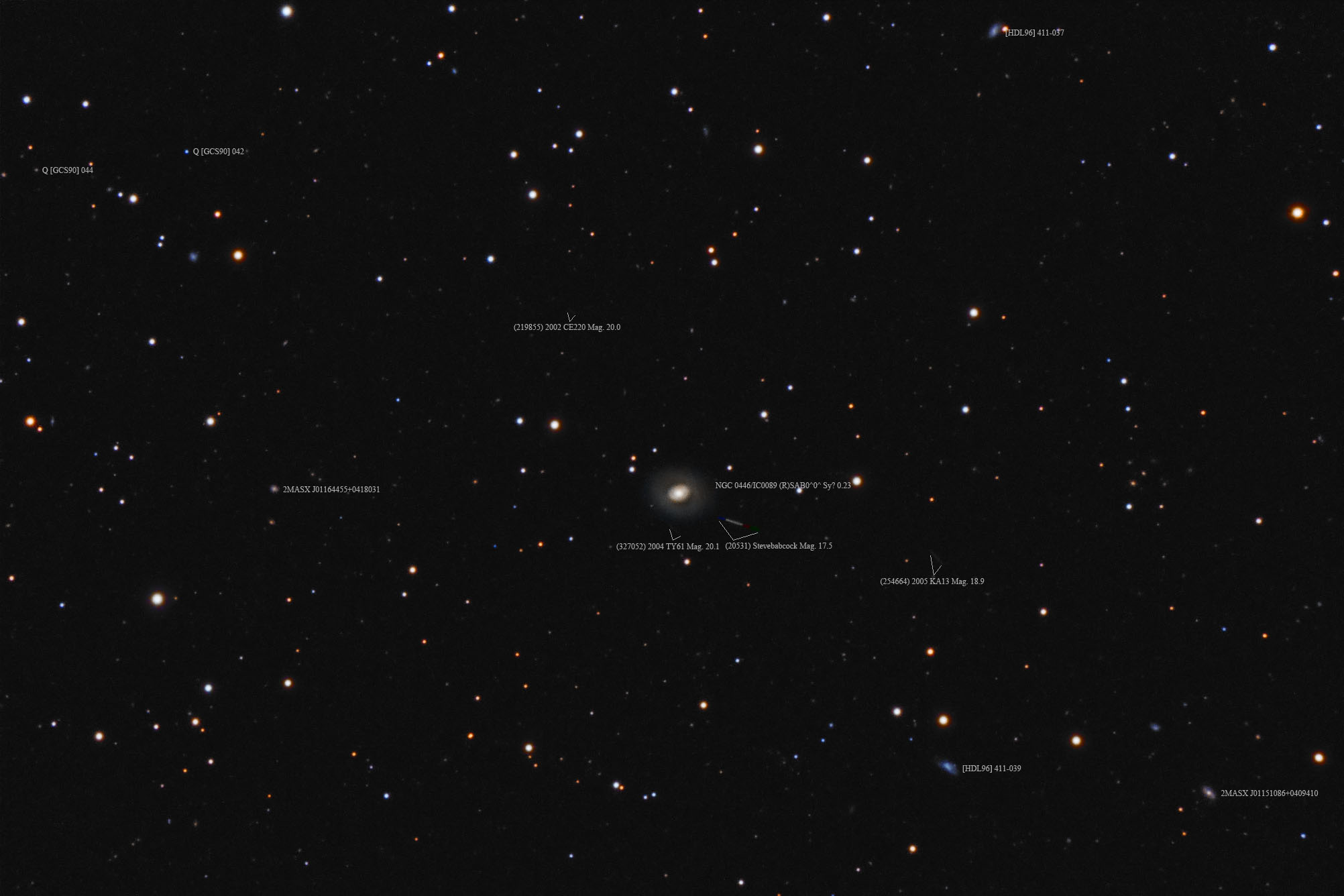| Description | Images |
Object name: NGC0446Designation(s): NGC0446, NGC 446/IC 89 is a ring galaxy in southern Pisces about a quarter of a billion light-years distant. That would make it about 120,000 light-years in diameter a quite large galaxy. NED classifies it as (R)SAB0^0^ Sy? while the NGC project says (R)SAB. There seems to be a big divide in the literature on whether this galaxy is a Seyfert galaxy or not. Each side seems to think it's obvious and they are right. The galaxy was discovered on October 23, 1864, by Albert Marth but he got the position wrong by a bit over a minute of arc. There's nothing at his location. It was rediscovered years later by Stephane Javelle on August 20, 1892, who got the position correct. Dreyer, not realizing the duplication gave Javelle's entry the designation of IC 89. Some sources incorrectly show a galaxy just west of the southwestern corner of my frame as NGC 446. The faux NGC 446 is PGC 4494/UGC 794. If I'd have realized this at the time I'd have framed it differently so as to pick it up. Seems I need to research before shooting rather than after but I'm so far behind I doubt that will happen anytime soon. You can read more on this mix-up at the NGC Project under NGC 446 and IC 89. Each tells the story a bit differently but comes to the same conclusion. Related Designation(s):2MASS J01160362+0417388, 2MASX J01160360+0417385, AKARI J0116033+041735, CGCG 0113.5+0402, CGCG 411-016, GALEXASC J011603.66+041739.5 , GALEXMSC J011603.60+041739.4 , IC 0089, IRAS 01134+0401, IRAS F01134+0401, ISOSS J01160+0418, LDCE 0075 NED005, LQAC 019+004 001, MCG +01-04-012, MRK 0565, NGC 0446, NGC0446, NSA 128990, NVSS J011603+041734, PGC 004578, UGC 00818, UM 090, UZC J011603.6+041738, [dML87] 573, [HDL96] 411-045, [M98j] 016 NED02, [SLK2004] 0166, [VCV2001] J011603.6+041739, [VCV2006] J011603.6+041739, |

